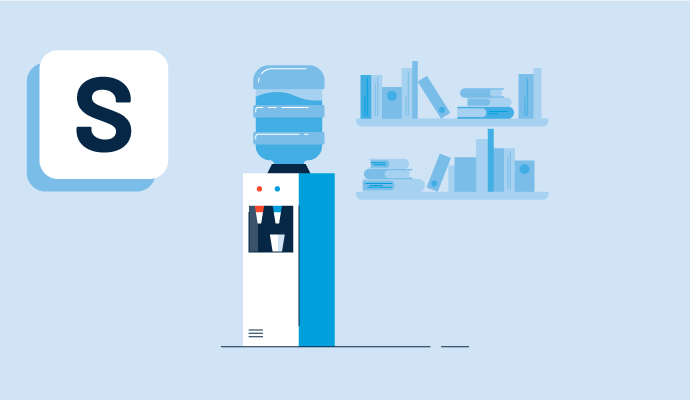What is social learning?
Social learning in business software refers to functionality that enables employees to learn from each other through engaging in collaborative activities. This can take a variety of forms, including employees sharing insights with team members, observing other learners, and engaging with views held by different people.
One of the primary goals of social learning is to boost engagement for employees in corporate settings and empower them to benefit from their peers’ knowledge. Social learning features in eLearning platforms can take a variety of forms, such as digital discussion forums, gamified elements like badges and leaderboards, feedback gathering, and interactive employee engagement software such as polls or newsfeeds. While collaborative learning functions have been standard in the education software industry, social learning has become more prominent in the business world as companies aim to increase the effectiveness of their training programs.
Benefits of using social learning
Utilizing social learning features comes with a number of potential benefits:
- Improves learner engagement: Gamification, discussion boards, and other social learning elements have the effect of boosting learners’ engagement with the content. In turn, engagement will likely increase workers’ retention of the material and encourage them to keep coming back for more.
- Builds community: As social creatures, humans inherently seek a sense of belonging. Social learning can foster collaboration that leads to stronger team culture.
- Increases completion rates: Sometimes, getting employees to complete training courses can be a challenge for HR departments. Adding social learning elements can increase engagement and lead to greater course completion rates.
- Celebrates knowledge sharing: Companies often try to promote innovation and entrepreneurship to drive product improvements and expand the business. Social learning provides an organic way to spotlight expert knowledge and share it with the rest of the company. It also enables employees to engage in discussions about their own learning journey and explore how the new knowledge or skills might translate into business improvements.
Social learning features
Social learning features found in corporate eLearning software include:
- Discussion forums: Providing the space for digital discussions encourages employees to share ideas, questions, or insights about what they are learning and benefit from the knowledge of others.
- Gamification: Leaderboards, badges, or point systems are examples of gamified social learning features that motivate learners and show them how they rate compared to their peers.
- Polls: Another tool for engagement, polls enable learners to share their opinions on a topic and see how their peers feel about the same issue.
- Personalized content: Connecting learners with content that is relevant to them and others in similar roles is an important part of social learning. Newsfeeds or other content dashboards provide personalized learning paths or content recommendations for learners, such as articles, videos, podcasts, or other media.
- Custom learning content: In addition to relying on prepopulated libraries to deliver educational content to employees, social learning systems often enable organizations and individuals within them to upload their own content to the platform. In this way, learners from across the organization can become content creators as well and directly share relevant knowledge with others in the business. For example, a product demo video uploaded by an engineer might become a valuable internal resource for other parts of the company to better understand a new product feature.
Social learning best practices
In order to make social learning work, consider these best practices:
- Make it fun: Leverage the fun elements of social learning, such as employee leaderboards and badges, to drive employee engagement.
- Spotlight experts: Use social learning features to find experts within your organization and encourage them to share their knowledge and collaborate with others.
- Value curiosity: Celebrate employee contributions to discussions and engagement with the platform. Encourage employees to take time out of the workday to work on developing a new skill and share their experience with others.
Social learning vs. microlearning
Social learning and microlearning are both hot terms in corporate learning, but they refer to different things. While social learning is fundamentally about how employees are interacting, microlearning refers more to the format and delivery of the content.
Microlearning platforms help provide short bursts of educational content that can be delivered on a variety of different devices and fit into the workday, rather than functionality that encourages collaborative learning. However, these concepts often work in tandem—platforms that incorporate elements of social learning may also have microlearning content that learners can engage with.

Shaun Bishop
Shaun is a Market Research Manager and Senior Research Analyst for HR technology. His coverage areas include talent management, learning and development, recruiting, compliance, and HR administration. Before joining G2, he worked as a public high school teacher at schools throughout Chicago and as a journalist covering communities in the San Francisco Bay area. In his free time, he enjoys hiking, reading history books, and baking new things with his sourdough starter.




















